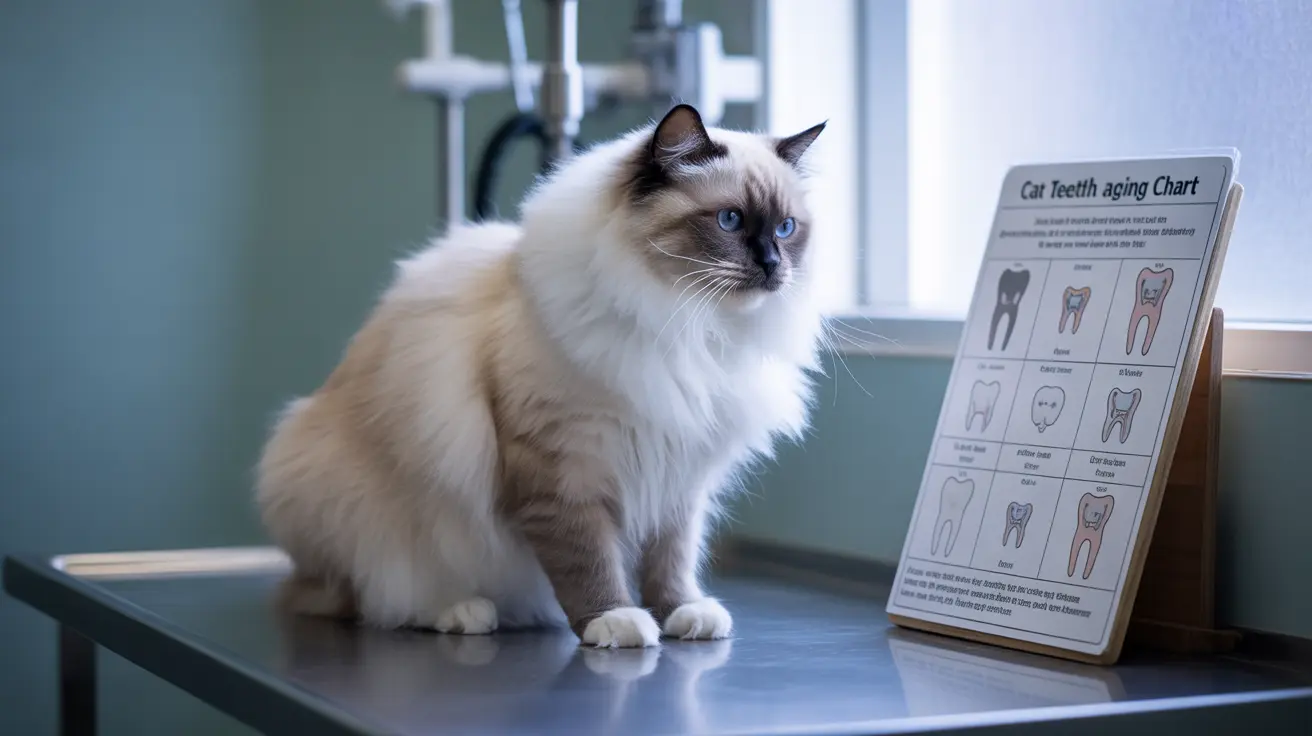Determining your cat's age can be challenging, especially if you've adopted a stray or rescue cat. One of the most reliable methods is using a cat teeth age chart, which helps pet owners and veterinarians estimate a cat's age based on dental development and condition. This comprehensive guide will walk you through the various stages of feline dental development and show you how to use these markers to determine your cat's approximate age.
Understanding Cat Teeth Development Stages
Cats go through distinct dental stages throughout their lives, making teeth an excellent indicator of age. Here's what you need to know about the progression of cat teeth development:
Kitten Stage (Birth to 8 Weeks)
- 2-3 weeks: First incisors appear
- 3-4 weeks: Canine teeth emerge
- 4-6 weeks: Premolars start showing
- By 8 weeks: Complete set of 26 baby teeth
Transition Period (3-7 Months)
- 3.5-4 months: Adult incisors replace baby teeth
- 4-5 months: Adult canines and premolars emerge
- 5-7 months: Complete set of 30 permanent teeth
Using Physical Signs to Determine Age
Dental Indicators
- Ages 1-2: Clean, white teeth
- Ages 2-3: Slight yellowing may appear
- Ages 3-5: Tartar buildup becomes visible
- Ages 5-10: Increased wear and staining
- Ages 10+: Significant wear, possible missing teeth
Additional Age Markers
- Coat condition
- Muscle tone
- Eye clarity
- Activity levels
- Joint flexibility
Special Considerations for Senior Cats
Aging cats require special attention to their dental health. Senior cats (11+ years) often show:
- Heavy tartar accumulation
- Worn or missing teeth
- Gum disease
- Reduced grooming ability
- Changes in eating habits
Tips for Maintaining Dental Health
To keep your cat's teeth healthy and make age estimation more accurate:
- Schedule regular dental check-ups
- Implement daily tooth brushing
- Provide dental-friendly toys and treats
- Monitor for signs of dental disease
- Consider professional cleanings when recommended
Frequently Asked Questions
How can I use a cat teeth age chart to estimate my kitten's age?
Look for specific dental markers such as the presence of baby teeth (2-8 weeks) or the emergence of adult teeth (3-7 months). Count the number of teeth and observe their type to match against the standard development timeline.
When do kittens lose their baby teeth and get their adult teeth?
Kittens begin losing baby teeth around 3.5 months of age, starting with incisors. The process continues through 7 months, when they should have all 30 permanent adult teeth.
What are common signs my kitten is teething and how should I care for them?
Common teething signs include drooling, decreased appetite, irritability, and excessive chewing. Provide soft food, dental toys, and maintain gentle handling during this sensitive period.
How do a cat's teeth change as they age beyond kittenhood?
Adult cats' teeth gradually show increasing yellowing, tartar buildup, and wear. By age 5, moderate tartar is common, and senior cats often have significant dental issues or missing teeth.
Can dental condition alone accurately determine an older cat's age?
While dental condition is helpful, it shouldn't be the sole indicator for older cats. Factors like diet, genetics, and dental care can affect tooth condition, making it necessary to consider multiple physical signs for accurate age estimation.
Conclusion
Understanding your cat's age through dental development is a valuable tool for proper care and health maintenance. While the cat teeth age chart provides excellent guidance, remember that individual cats may show variation. When in doubt, consult with a veterinarian for the most accurate age assessment and appropriate care recommendations.






